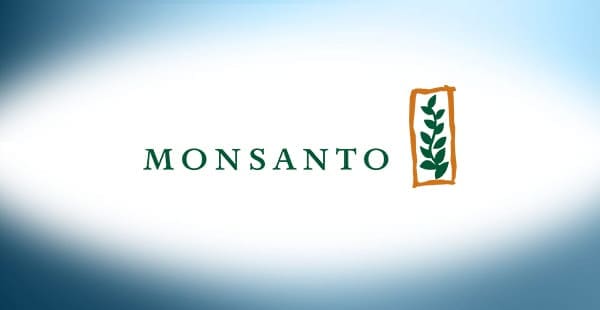Monsanto History of Asbestos Use
Monsanto Chemical Works operated from 1901 to 2018. The American company became a major producer of chemical, agricultural and biochemical products. From the 1930s to the 1970s, asbestos was widely used in chemical plants, like Monsanto’s.
Monsanto went through a series of mergers and name changes that are relevant to workers’ asbestos exposure:
- After significant business growth during World War I, the company became Monsanto Chemical Company in 1933.
- In 1964, the name changed again to Monsanto Company to better reflect the company’s range of products.
- In 1997, Monsanto rebranded as a “life sciences” company and created a new company for its chemical division called Solutia Inc.
- In 2000, Pharmacia & Upjohn, a global pharmaceutical company, merged with Monsanto and G.D. Searle & Company, a previous acquisition. Together, they created a new company called Pharmacia.
- In 2002, Monsanto re-incorporated and publicly positioned itself as an “agricultural company.”
By 2008, Monsanto agreed to take financial responsibility for lawsuits related to events before the creation of Solutia Inc. These lawsuits involved property damage, injuries and product liability tied to asbestos and various toxic chemicals.
Monsanto’s environmental footprint also includes numerous hazardous sites. The U.S. Environmental Protection Agency (EPA) has linked 41 Superfund sites to Monsanto or Solutia Inc. These sites continue to affect communities. Some key examples include:
- Anniston PCB Site (Monsanto Co.) in Anniston, Alabama
- Monsanto Chemical Co. (Soda Springs Plant) in Soda Springs, Idaho
- Monsanto Corp. (Augusta Plant) in Augusta, Georgia
- Solutia Inc. facility (500 Monsanto Avenue) in Sauget, Illinois
- Solutia Inc. facility (John F. Queeny Plant) in St. Louis, Missouri
Following its acquisition by Bayer in 2018, Monsanto was dissolved as a separate entity. The company’s history of asbestos use continues to affect people, with lawsuits linking Monsanto to serious health issues. Former employees are still seeking justice for illnesses tied to exposure from sites and materials connected to the company.
Resources for Mesothelioma Patients
Monsanto Asbestos Products
Monsanto did not manufacture asbestos products. However, some of Monsanto’s plants have at least one documented instance of asbestos exposure. This is because its plants used other companies’ asbestos products.
The Monsanto facilities with known asbestos use are located in the following cities:
- Alvin, Texas (Chocolate Bayou Plant)
- Anniston, Alabama
- El Dorado, Arkansas
- Fayetteville, North Carolina
- Greenwood, South Carolina
- Monroe, Washington
- Sauget, Illinois (W.R. Krummrich Plant)
- Springfield, Massachusetts
- St. Louis, Missouri (John F. Queeny Plant)
- Texas City, Texas
For example, in a legal document from 2000, Monsanto admitted to the presence of asbestos in and around its Texas facilities. The asbestos materials present on the grounds included:
- Floor tiles
- Gaskets
- Packing
- Pipe insulation
- Roofing materials
- Siding
- Transit board
- Vessel insulation
Monsanto used these asbestos materials at its Texas plants until 1972. Monsanto also said that asbestos gaskets might have still been used at their facilities after 1972 until the company found a replacement.
Monsanto and Occupational Exposure
Like many industries, chemical plants once relied on asbestos. Companies used the mineral in the manufacturing process because of its durability and heat resistance. Because of this use, Monsanto put employees at risk of occupational asbestos exposure. Employees may have a greater chance of developing mesothelioma or other asbestos-related diseases.
Workers at Monsanto’s plants may have come into contact with asbestos through dust, equipment and machinery. The method and level of exposure depend on the person’s role. Some jobs at higher risk include chemical plant workers, quality assurance workers and systems operators.
Asbestos Lawsuits Against Monsanto
Some Monsanto workers were exposed to asbestos on the job and later developed mesothelioma, lung cancer or other related illnesses. Several of these workers filed lawsuits against Monsanto and received settlements.
For example, the family of a carpenter who died from lung cancer after asbestos exposure filed a lawsuit against his former work sites. These sites included Monsanto, Union Carbide and Entergy Louisiana Inc. The family was awarded $5.95 million in damages.
Here are more examples of workers who filed lawsuits against Monsanto and received settlements:
- $6,024,534 for a 78-year-old Navy veteran
- $4,996,753 for a 59-year-old Navy veteran and mechanic
- $1,854,682 for a 55-year-old ironworker
- $972,351 for an 81-year-old plant worker and plumber
Monsanto employees who were exposed to asbestos and diagnosed with an asbestos-related illness may be eligible to seek compensation. A mesothelioma lawyer can file a claim and handle asbestos lawsuits.







